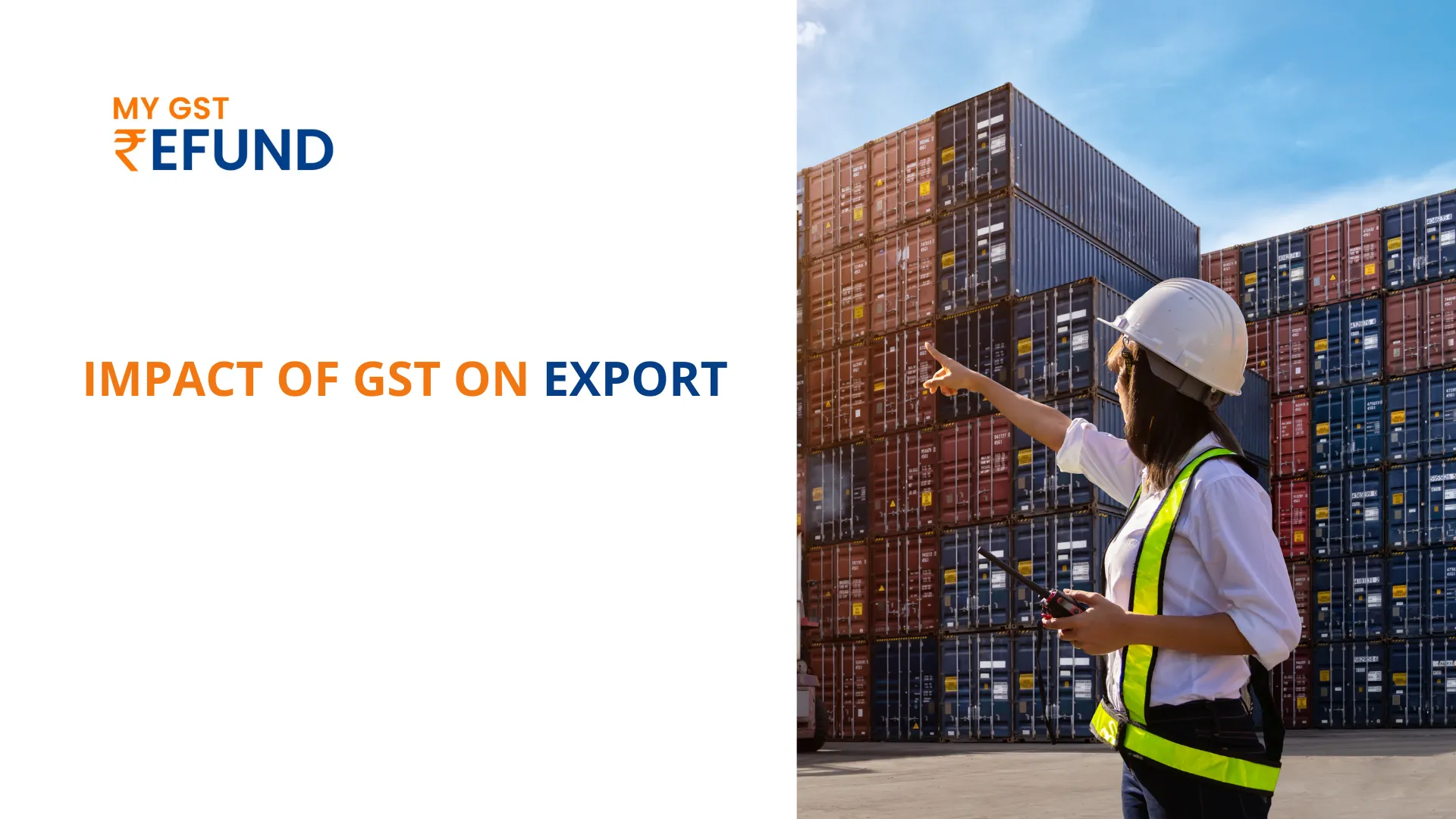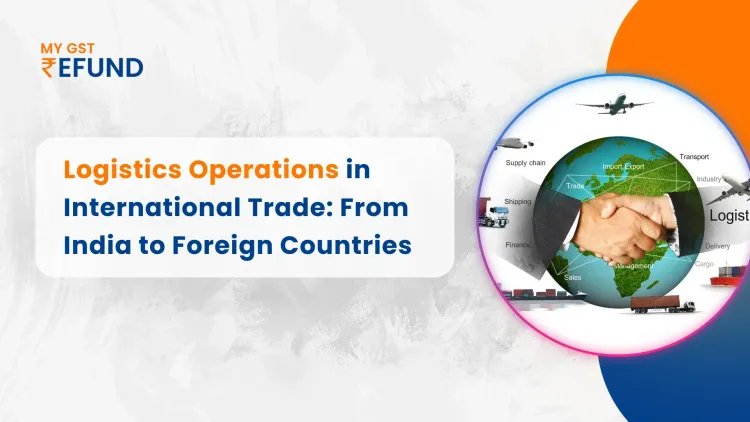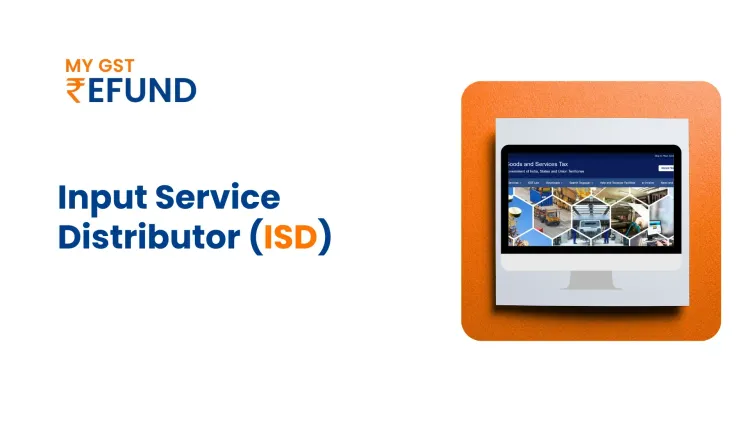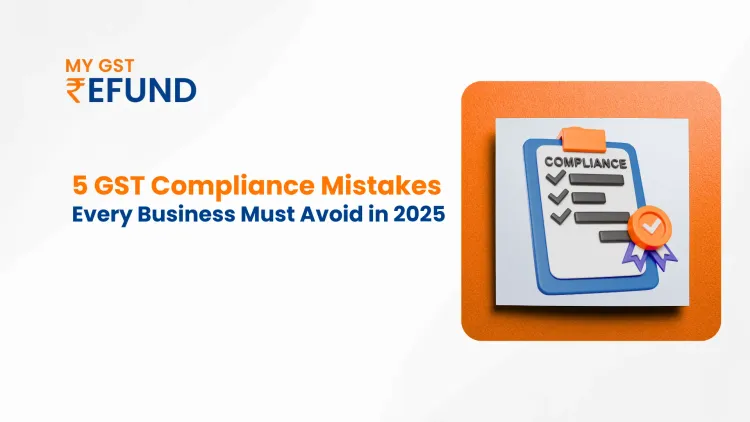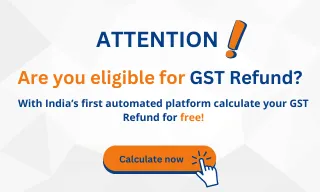When a business in India exports products or services to other countries, it can use a Letter of Undertaking (LUT) to avoid paying a tax called Integrated Goods and Services Tax (IGST) at the time of export. Instead of paying this tax upfront, the business can claim a refund for any IGST paid on inputs used for the export. To get this refund, the business must first submit a general manifest, which is a document detailing the exported goods, and file a return using Form GSTR-3. Additionally, the shipping bill from Customs acts as the application for the IGST refund. This process ensures that businesses don’t have to bear extra tax costs upfront and can recover taxes related to their export activities.
How will the Export-related GST be assessed ?
Under the GST system exports of products or services are not taxed. Before GST there was a system where businesses could get a refund for taxes paid on materials used for exporting goods that were not taxed. This process was quite complicated.Now businesses can only get a refund for customs duty paid on imported materials or federal excise duty on specific items like certain petroleum or tobacco products used as inputs or fuel. There was some confusion about how to get refunds for input taxes related to zero-rated exports.To clear up this confusion the Indian government issued guidelines that explain how businesses can claim refunds for input tax credits on zero-rated exports. Exporters dealing with zero-rated goods under GST have a couple of options for getting their refunds.
OPTION 1
Businesses can provide products or services without paying the integrated tax if they use a bond or a letter of undertaking. Afterward, they can ask for a refund on any unused input tax credits following certain rules and procedures. To get the refund, the exporter needs to submit an application through the common portal. They can do this directly or with help from a facilitation center approved by the GST commissioner. Before submitting the refund application, they must first submit an export manifest or report as required by Customs.
OPTION 2
After following certain rules and procedures and paying the IGST, exporters, the United Nations, embassies, and other specified agencies can request a refund of the tax paid on the goods or services they provided. The refund request must be made according to the guidelines in Section 54 of the CGST Act. When exporting goods from India, the exporter must submit a shipping bill. This shipping bill acts as a request for the IGST refund. The person managing the shipment must also file an export manifest or report that includes details of the shipping bills for it to be accepted.
The department updates shipping bill forms to include information about IGST and GSTIN. These updated forms are available on the department’s official website. The department is also working to make it easier for factories to fill out the necessary forms and get the required permits to support the Indian export sector under GST.
Deemed Exports
Under GST, certain situations are considered exports. These include:
- Goods provided by a registered person without special permission.
- Goods supplied to units like hardware technology parks, software technology parks, biotechnology parks, or export-oriented undertakings.
- Capital goods provided by a recognized person for export promotion without needing special permission.
- Gold given by a bank or government agency without prior customs authorization.
For these deemed exports, the usual GST export processes must be followed when filing returns.
Documents needed to file an Export refund claim
To export refund claim, the following paperwork is required:
- A copy of the return showing that the duty was paid.
- A copy of the invoice.
- Proof (either a certification from a chartered accountant or a self-certification) that confirms the tax was not transferred to someone else.
- Any additional documents required by the government.
Refund requests for exports
Refund requests for exports
In addition to customs taxes, GST may also need to be paid, but a partial refund for these taxes might be available. Previously, obtaining refunds for taxes on inputs used in the export of exempt goods was complicated. To address this, the Indian government issued guidelines to clarify how to claim input tax credits on zero-rated supplies. When preparing a refund application for zero-rated supplies, it is important to follow these guidelines carefully, ensure all required documents are correctly prepared and submitted, and meet all procedures and requirements to avoid any delays.
Goods and Services exported without IGST payment
If a business doesn’t use the input credit it can request a refund. Refunds for duties already paid are usually granted within two weeks. The exporter needs to send the shipping bill for the goods shipped outside of India. Before the refund request is processed the export report or manifest that includes the date and number of the shipping bills must be filed by the person in charge of the shipment.
Export of goods and services subject to GST
The exporter might be eligible for a refund of the tax paid on the shipments. To claim a refund either for shipments made without paying IGST or for input credits the exporter needs to file a separate online application using the form RFD-01A.
How to make a GST refund claim ?
- Step 1: To start the process for a GST refund claim related to export promotion, submit the claim along with the necessary documents to the designated official. This should include a declaration with invoice dates and quantities and Bank Realization Certificates (also known as Foreign Inward Remittance Certificates). After filing the GST refund, an acknowledgment will be received in Form GST RFD-02 within three days.
- Step 2: The official will then issue an order in Form GST RFD-04, which provisionally approves the GST refund amount within seven days of receiving the application.
- Step 3: Payment advice will be given in Form GST RFD-05, and 90% of the refund amount will be electronically credited to the bank account specified in the application.
- Step 4: The remaining 10% of the refund will be processed after reviewing the documents. Physical documents will be checked against online information available on the GST site. If everything is in order, Form GST RFD-06 will be issued to authorise the payment of the remaining 10%.
Effect of GST on Export
Under GST, exports are regarded as zero-rated supplies, which means that goods and services exported are exempt from tax. Refunds may be claimed for the GST paid on inputs utilized for these exports. As a result, Indian goods and services become more competitive in foreign markets since exporters incur less taxes. However, it can be difficult to obtain these refunds leading to delays in payments.
The Integrated Goods and Services Tax (IGST) is a component of GST which was introduced in the Indian taxation system as covering all items sold across states or between India and other countries. Both state and federal governments collect IGST collections. With IGST introduction, it has simplified taxation systems by removing complexity of dealing with different tax codes from multiple states for exporters. This has lightened compliance requirements placed before export trades.
Conclusion
Indian exports have become more efficient and transparent due to GST. The government’s ‘Make in India’ initiative has been supported by it through enhanced export quantity and quality. Although GST has improved the clarity of tax system, exporters remain uncertain about its complete impact. In general, GST has created a better condition for export under a more coordinated and competitive system. However, refund procedures still need to be simplified and logistical challenges addressed. A positive trajectory for Indian exports combined with increased prominence of India’s economy globally is being formed by the synergy between GST and ‘Make in India’.
Also Read: Understanding GST in Export: Eligibility for Refunds and Benefits
Related Posts




